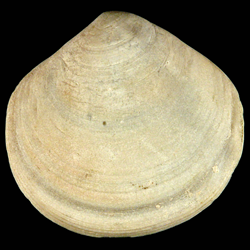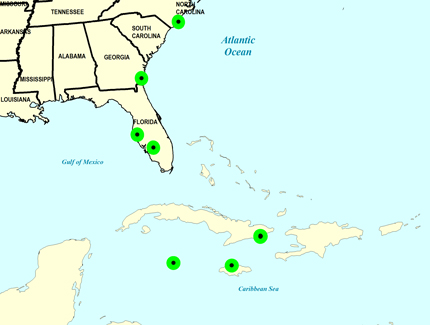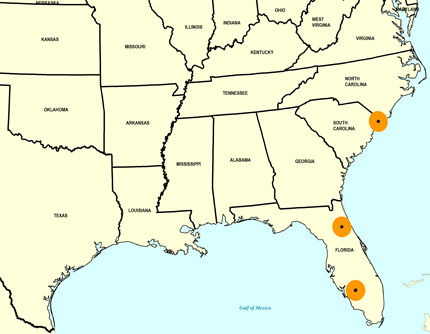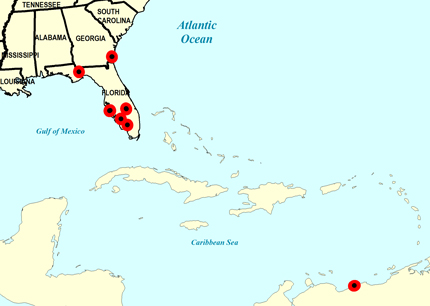
Semele proficua

- Phylum: Mollusca
- Class: Bivalvia
- Order: Imparidentia
- Family: Semelidae
- Genus: Semele
- Species: Semele proficua (Pulteney, 1799)
- Common Name: Atlantic semele
Geological Range
Late Pliocene to Late Pleistocene; Recent.
Paleogeographic Distribution
Venezuela to North Carolina.
Remarks
For information on the modern distribution of the species, see Malacolog and WoRMS.
First English Description (from Montagu, 1812, p. 66-67):
"T. with a sub-orbicular, sub-diaphanous shell, beset with numerous fine, regular, elevated, concentric ridges; the interstices or furrows crossed with minute striae, scarce discernible but by the help of a glass: umbo small. prominent, placed nearly central, and turns a little to one side: hinge with two small central teeth, and broad laminated lateral ones, projecting above the margin; from the apex a furrow runs on the inner side of the posterior lateral tooth, in which the connecting cartilage is fixed; colour yellowish-white. Inside smooth, glossy yellow: the tongue or cicatrix to which the animal is affixed, is broad, and runs into the middle of the shell; margin plain, beneath which is a depressed punctured line, parallel with the outer edge, not very conspicuous in younger shells. Length an inch and a quarter, breadth somewhat more.
We were favoured with this species by the Rev. Mr. Rackett, who said it was found rarely in Dorsetshire. Doctor Pulteney says on the north shore at Poole, and at Weymouth.
Chemnitz has given a very good figure of this shell, and quoted the Tellina reticulata of Linnaeus. Gmelin has not quoted Chemnitz's figure, nor has he given any synonyms."
To access this description in its original formatting through the Biodiversity Heritage Library, click here.
Stratigraphic Occurrences
- Late Pleistocene
- Falmouth Formation (Jamaica)
- Fort Thompson Formation (S. FL)
- Ironshore Formation (Grand Cayman Island)
- Jaimanitas Formation (Cuba)
- Neuse Formation (NC)
- Satilla Formation? (GA)
- Middle Pleistocene
- Bermont Formation (S. FL)
- Bermont Formation? (S. FL)
- Early Pleistocene
- Caloosahatchee Formation (S. FL)
- Nashua Formation (N. FL)
- Waccamaw Formation (SC)
- Late Pliocene
- Duplin / Raysor formations (GA)
- Jackson Bluff Formation (N. FL)
- Mare Formation (Lower) (Venezuela)
- Raysor Formation (GA)
- Tamiami Formation (Buckingham Limestone) (S. FL)
- Tamiami Formation (Pinecrest Beds) (S. FL)




